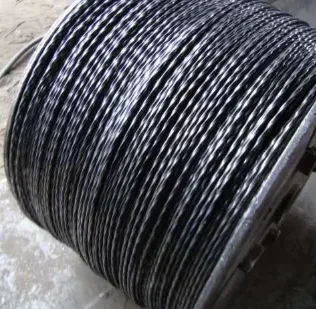ئىيۇل . 23, 2025 11:37 تىزىملىككە قايتىش
Energy Absorption Capabilities of Twisted Square Bars in Seismic-Resistant Structures
In the realm of modern civil engineering, seismic-resistant structures have become a cornerstone of urban development, particularly in earthquake-prone regions. Among the myriad components that enhance a building’s ability to withstand seismic forces, twisted square bars have emerged as a critical innovation. These bars, characterized by their unique geometric configuration, offer exceptional energy absorption capabilities, making them indispensable in reinforcing frameworks. This article explores the role of twisted square bars in seismic-resistant designs, focusing on their affordability, versatility, and performance.

Cheap Twisted Square Bar: Balancing Cost and Performance in Seismic Design
The demand for cost-effective yet reliable construction materials has driven the adoption of cheap twisted square bars in seismic-resistant projects. These bars are engineered to provide high tensile strength and ductility while remaining economically viable for large-scale applications. The twisting process enhances the surface area of the bar, creating friction between the steel and concrete matrix. This interaction improves load distribution during seismic events, allowing structures to dissipate energy more efficiently.
A ئەرزان باھالىق كۋادرات بالداق achieves this balance by utilizing standardized manufacturing techniques that reduce material waste. By optimizing the twisting angle and pitch, manufacturers ensure consistent performance without compromising affordability. This makes them ideal for infrastructure projects with stringent budget constraints, such as public housing or bridges, where seismic resilience cannot be sacrificed for cost savings.
5mm Twisted Square Bar: Precision Engineering for Critical Applications
When precision matters, the 5mm Twisted Square Bar stands out as a specialized solution for seismic-resistant structures. Its compact dimensions make it suitable for reinforcing confined spaces, such as joints and beam-column intersections, where larger bars might compromise structural integrity. The 5mm thickness ensures flexibility while maintaining rigidity, enabling it to absorb and redistribute energy during lateral movements caused by earthquakes.
The 5mm Swisted Square Bar is particularly effective in prefabricated modular systems, where uniformity and lightweight properties are paramount. Its twisted design amplifies bond strength with concrete, reducing slippage under cyclic loading. Engineers favor this variant for high-rise buildings and industrial facilities, where seismic forces exert intense pressure on structural connections. By integrating 5mm Twisted Square Bars, designers achieve a harmonious blend of strength and adaptability.
Twisted Square Bar: Design Principles and Manufacturing Excellence
The efficacy of a بۇرمىلانغان چاسا بالداق lies in its design philosophy. Unlike traditional reinforcement bars, the twisted geometry introduces torsional resistance, which mitigates crack propagation in concrete. During an earthquake, the bar’s twisted profile allows it to undergo controlled deformation, converting kinetic energy into heat through micro-level friction. This mechanism delays structural failure, providing occupants with crucial time to evacuate.
Manufacturing a بۇرمىلانغان چاسا بالداق involves cold-working high-grade steel to induce helical ridges along its length. Advanced quality control systems ensure each bar meets international seismic standards, such as ASTM A615 or ISO 15630. The process also enhances corrosion resistance, extending the lifespan of reinforced concrete in harsh environments. Bulk production capabilities enable suppliers to deliver these bars globally, supporting infrastructure development in seismically active regions.
FAQs About Twisted Square Bars
How does a cheap twisted square bar maintain quality despite its low cost?
The affordability of a ئەرزان باھالىق كۋادرات بالداق stems from optimized production workflows, not inferior materials. Manufacturers use automated twisting machines and recycled steel alloys to reduce expenses while adhering to strength specifications. Rigorous testing ensures each batch meets seismic performance criteria.
What distinguishes the 5mm Twisted Square Bar from thicker variants?
The 5mm Twisted Square Bar excels in applications requiring fine reinforcement, such as masonry walls or thin concrete slabs. Its smaller diameter allows tighter spacing, enhancing load distribution without adding excessive weight. Thicker bars are reserved for heavy-load zones like foundations.
Can a twisted square bar be customized for specific projects?
Yes. Manufacturers offer customization in twisting pitch, length, and coating (e.g., epoxy or galvanized) to suit project requirements. Bulk orders ensure consistency across large-scale installations.
How does the twisting process improve a twisted square bar’s energy absorption?
The helical ridges increase surface contact with concrete, boosting bond strength. During seismic activity, the twists create micro-friction points that dissipate energy, reducing stress concentration in critical zones.
Are twisted square bars compatible with automated construction techniques?
Absolutely. Their uniform geometry allows seamless integration with robotic welding and prefabrication systems, accelerating construction timelines while maintaining seismic resilience.
The integration of twisted square bars in seismic-resistant structures represents a fusion of innovation and practicality. From cheap twisted square bars that democratize seismic safety to precision-engineered 5mm Twisted Square Bars that address niche challenges, these components are reshaping modern engineering. As urbanization accelerates in earthquake-prone areas, the demand for reliable, scalable solutions will only grow. By leveraging the energy absorption capabilities of twisted square bars, the construction industry can build safer, more resilient communities for future generations.
-
How PVC Welded Wire Mesh Enhances Industrial Safety Standards
خەۋەرلەرJul.23,2025
-
Hexagonal Wire Mesh Innovations for Coastal Protection Projects
خەۋەرلەرJul.23,2025
-
Galvanized Wire Fence Maintenance Tips for Harsh Weather Conditions
خەۋەرلەرJul.23,2025
-
Galvanized Steel Grating Applications in Industrial Flooring Solutions
خەۋەرلەرJul.23,2025
-
Energy Absorption Capabilities of Twisted Square Bars in Seismic-Resistant Structures
خەۋەرلەرJul.23,2025
-
Affordable Chain Link Fence Gate Options for Residential Security
خەۋەرلەرJul.23,2025

